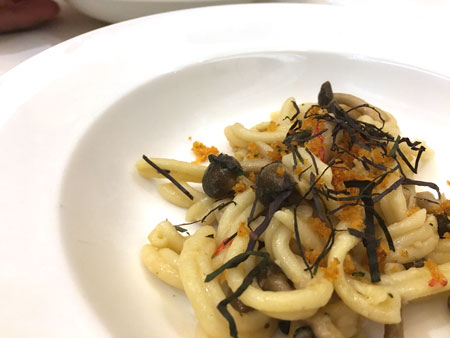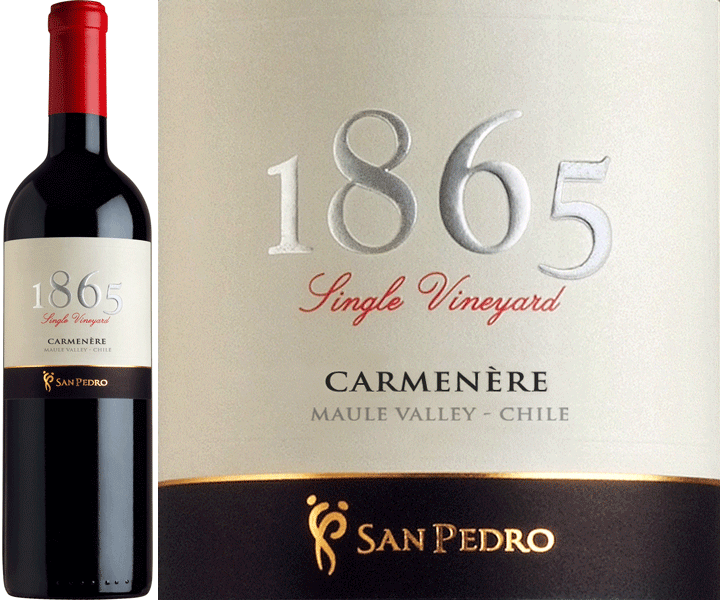Last week I wrote about the Spring Edition Interactive Dinner VeritageMiami staged on March 11. The focus of last week’s post was pairing wine with a complex first course that featured sweet and sour flavors, lots of umami (fish sauce) and varied textures.
This week, let’s look at the much more straightforward pairing of wine with the second course at the interactive dinner. That dish was a freshly made short pasta called gemelli. As with every pasta dish, the wine is paired not with the pasta but with the sauce, and this sauce was intriguing because it pulled together an earthy mushroom with a tangy, pickled shallot and slightly spicy scallions (View the full recipe as we prepared it at VeritageMiami).
 Hon Shimeji (Photo: Kuha455405 – Own work (本人撮影), CC BY-SA 3.0)
Hon Shimeji (Photo: Kuha455405 – Own work (本人撮影), CC BY-SA 3.0) Hon Shimeji is the commercial name of very seasonal mushroom, so our guest chefs, Justin Flit of Proof Pizza and Pasta and Brian Nasajon of Beaker & Gray, used the more readily available buna-shimeji, a close relative also known as the brown beech mushroom. Either mushroom works well in the dish – they are rather bitter raw, but have a soft earthy flavor when they are cooked. Adding butter infused with sea urchin roe, the subtle flavor of the dish is increased, as is the apparent richness. To offset that, our chefs added pickled shallots that helped offset the buttery richness and also increased the acidity of the dish.
 Gemelli with hon shimeji mushrooms (Photo: VeritageMiami)
Gemelli with hon shimeji mushrooms (Photo: VeritageMiami) For this dish there is one wine that stands out as a great match, a wine with enough acidity to balance the pickled shallots and cut through the richness, a wine with earthy tones of its own to marry beautifully with the mushrooms: pinot noir. I had planned to use a pinot noir from Viña San Pedro’s Leyda winery in Chile but there was a last minute glitch and we had to substitute another of the company’s wines. We opted for the single-vineyard carmenère from 1865 winery in Chile’s Maipo Valley, a wine with less acidity than the pinot noir, but a very pleasing softness and well-balanced fruit. When making this at home, I’ll still go with a pinot noir to stress the earthiness and balance of the dish. The key is to balance acidity – acid food needs an acid wine. A wine with little acidity will just seem flat and flabby, but with the sort of vibrancy one finds in a New Zealand or Oregon pinot noir, this dish is glorious. And it worked nicely with the carmenère as well.
 1865 Single Vineyard Carmenère (Photo: Viña San Pedro)
1865 Single Vineyard Carmenère (Photo: Viña San Pedro) Next week, I’ll share some pairing ideas for the third dish on the dinner menu, a pan-seared pork belly glazed with salty umeboshi plums. Now, there is a challenge!
